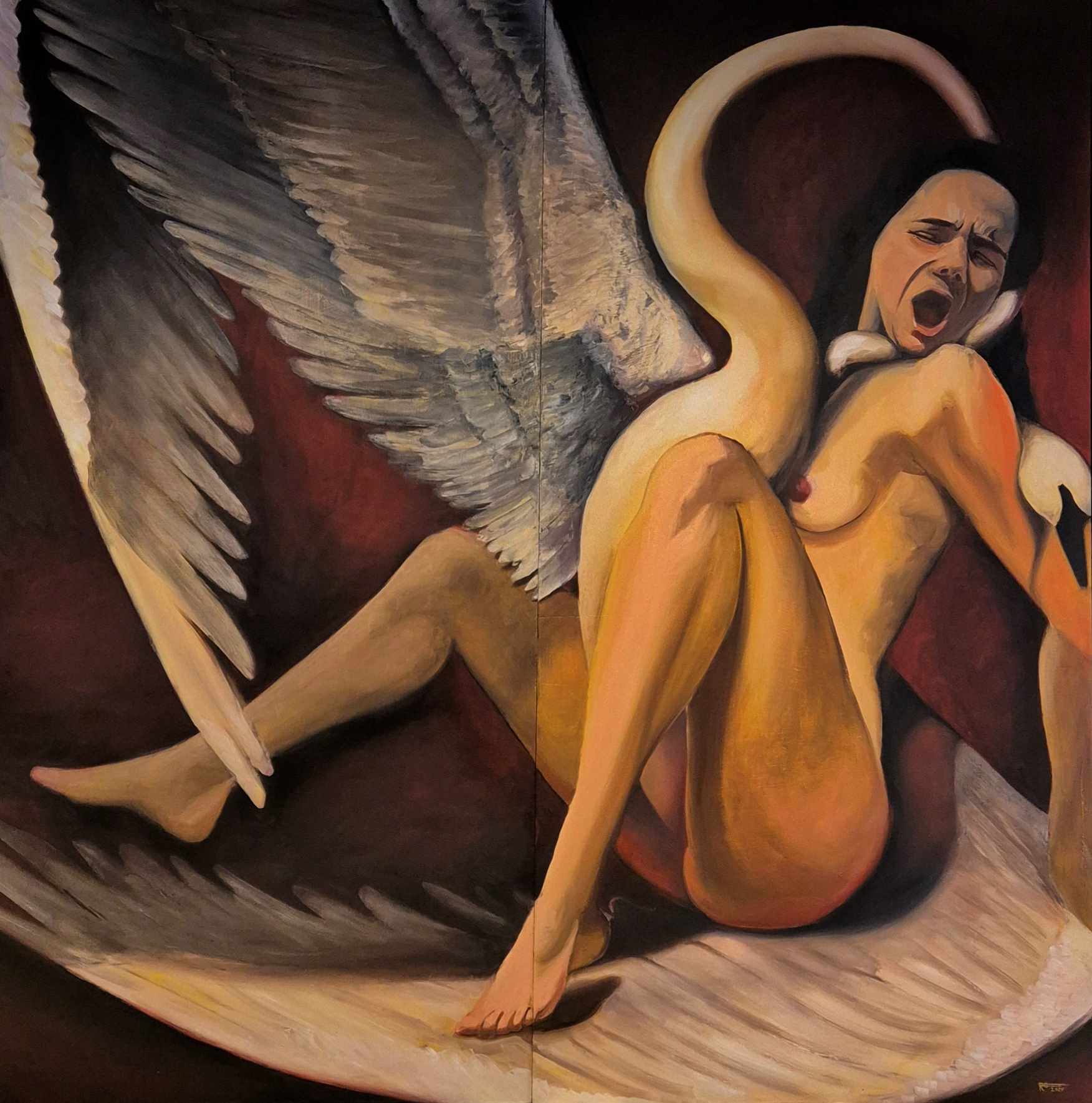” You can dent the soul and bend it. You can hurt it and scar it. You can leave the marks of illness upon it, and the scorch marks of fear. But it does not die ”
Clarissa Pinkola Estes

Title
Material and size
Artist
Status
€ 4.148, 00
Leda and the swan
Oil on panel, 122x122cm
Rachel Climo
Available
Leda and the Swan, somehow always depicted as a joyful moment, is a rape. So this is a painting depicting a rape, the first ‘true’ Leda and the Swan in figurative art. Notice how both the frame and the painting are cut in half, the way a human soul is destructed through acts of violence.
One in eight girls worldwide has experienced rape or sexual assault before the age of 18 (UNICEF Division of Data, Analytics, Planning and Monitoring, October 2024). Rape is often about dominance and power. Dominance can be expressed through dehumanization – rape.
One in ten students get raped in the few years they spend studying and almost 20% of all women get raped at least once during their lifetime (Amnesty International, 2021).
In the myth, Zeus wants to have sex with Leda, but she does not. He turns himself into a swan and to convince her of his innocence, he pretends to be a victim himself. He circles in the air above Leda, simulating being hunted by an eagle.
In this painting the swan has a stoic look on his face, unaware of the violent act he is committing. He deprives Leda of a way to get away and locks her in a suffocating position. Zeus rapes Leda.
Why has this story been painted for centuries as if Leda enjoyed this moment? Why is there not one artwork featuring the violence happening here? Representing women as inviting and pretty, even during extreme circumstances like rape is the pinnacle of objectification.
Art shapes the way we see, and objectification has to shift to humanization.
Therefore, the first human Leda.